The Long-nosed Mongoose (Xenogale naso), is a sleek and stealthy predator that inhabits various regions of Africa and Asia. Long-nosed Mongoose:
The long-nosed mongoose is endemic to Nigeria’s Niger Delta, Cameroon, the Central African Republic, Equatorial Guinea, Gabon, the Republic of the Congo, and the Democratic Republic of the Congo. It has been measured from sea level to an elevation of 640 m (2,100 ft). It is one of the most reliant on water.
The habitat of the long-nosed mongoose has been disrupted as a result of deforestation, mining, and slash-and-burn farming activities. It is hunted for bushmeat markets in Gabon.
Since 1996, it has been classified as Least Concern on the IUCN Red List.
Long-nosed Mongoose: Species Profile
COMMON NAME: Long-nosed Mongoose
SWAHILI NAME: Nguchiro Pua Ndefu
SCIENTIFIC NAME: Herpestes naso
TYPE: Mammal
FOOD: Long-nosed mongooses primarily feed on a diet consisting of small mammals, birds, reptiles, insects, and fruits. They are skilled hunters and foragers, using their long snout to search for prey in the ground and under vegetation.
HABITAT: Long-nosed mongooses inhabit a variety of habitats, including forests, woodlands, savannas, and grasslands, throughout sub-Saharan Africa. They are adaptable and can be found in both dry and moist environments.
SIZE: Long-nosed mongooses have a body length of about 40 to 50 centimeters (16 to 20 inches), with a long tail measuring an additional 30 to 40 centimeters (12 to 16 inches). They weigh around 1 to 2 kilograms (2.2 to 4.4 pounds).
AVERAGE LIFE SPAN IN THE NATURAL HABITAT: In the wild, long-nosed mongooses have an average lifespan of around 7 to 10 years. However, their lifespan can vary depending on factors such as predation, habitat quality, and availability of food resources.
ACTIVE: Long-nosed mongooses are diurnal animals, meaning they are primarily active during the day. They are agile and quick, using their slender bodies and long snouts to navigate through their environment and locate prey.
GESTATION PERIOD: The gestation period for long-nosed mongooses is approximately 60 to 70 days. Females give birth to litters of 2 to 4 young, which are born in underground burrows or tree hollows.
WEIGHT: Long-nosed mongooses weigh between 1 and 2 kilograms (2.2 to 4.4 pounds), making them relatively small and lightweight compared to many other mongoose species. They have a slender body, short legs, and a long snout.
SIZE COMPARISON TO A 6-FT MAN: Long-nosed mongooses are much smaller than a 6-ft man, with a body length of about 40 to 50 centimeters (16 to 20 inches). They are agile and swift creatures, well adapted to their natural habitats.
Physical Features:
The Long-nosed Mongoose, scientifically known as Xenogale naso, is a fascinating small carnivorous mammal native to Southeast Asia. It has distinct physical features that make it easily recognizable in the wild.
1. Size and Build: The Long-nosed Mongoose is a relatively small mongoose species, measuring about 30 to 45 centimeters (12 to 18 inches) in length, excluding the tail. Its long tail can add an additional 20 to 25 centimeters (8 to 10 inches) to its overall length. They are agile and have slender bodies, well-adapted for quick movements and sneaky hunting tactics.
2. Coloration: The mongoose’s fur is dense, short, and coarse, with a color pattern that aids in camouflage. They typically have a blend of colors, ranging from reddish-brown to dark brown on their upper bodies, while their underparts are generally lighter in color.
3. Head and Nose: As the name suggests, the Long-nosed Mongoose is characterized by its elongated snout, which sets it apart from other mongoose species. This extended nose plays a crucial role in their feeding habits, allowing them to probe deep into crevices and burrows in search of insects and small vertebrates.
4. Ears and Eyes: Their ears are rounded and prominent, providing excellent auditory sensitivity to detect potential prey or predators. They also have keen eyesight, helping them navigate their environment during both day and night.
5. Claws and Paws: Long-nosed mongooses have sharp, retractable claws that aid in climbing trees and digging. Their paws are well-suited for grasping and manipulating prey as they hunt.
6. Nocturnal Behavior: The Long-nosed Mongoose is primarily nocturnal, meaning they are most active during the night. This behavior helps them avoid competition with diurnal predators and utilize their excellent night vision for successful hunting.
7. Solitary Lifestyle: Unlike some other mongoose species, Long-nosed mongooses are generally solitary animals. They prefer to live and hunt alone or occasionally in pairs.
8. Habitat: Long-nosed mongooses inhabit a variety of habitats, including forests, grasslands, and shrublands. They are often found near water sources, such as rivers and streams, where they can find ample food.
9. Conservation Status: While not currently classified as endangered, the Long-nosed Mongoose faces threats from habitat loss and fragmentation due to human activities and agricultural expansion.
Overall, the Long-nosed Mongoose is a unique and enigmatic creature, well-adapted to its environment, making it a captivating sight for wildlife enthusiasts and researchers alike.
A. Long, Pointed Snout:
The Long-nosed Mongoose derives its name from its distinctive feature—the long, slender snout that protrudes from its face. This specialized snout aids in its hunting activities by allowing it to dig into the ground in search of food and access hard-to-reach prey.
B. Sleek and Agile Body:
With a body length ranging from 40 to 60 centimeters and an additional 30 to 45 centimeters of tail, the Long-nosed Mongoose boasts a sleek and agile physique. Its slender frame, short limbs, and well-developed muscles enable it to move swiftly and with precision.
Habitat and Distribution:
The Long-nosed Mongoose can be found in various habitats across Africa and Asia. In Africa, it inhabits grasslands, savannas, forests, and even mountainous regions. In Asia, it is primarily found in the Indian subcontinent, including countries such as India, Sri Lanka, and Nepal. It displays remarkable adaptability to different ecosystems.
Hunting Strategies:
A. Opportunistic Feeder:
The Long-nosed Mongoose is an opportunistic hunter, preying on a wide range of small animals. Its diet includes insects, small mammals, reptiles, birds, eggs, and even fruits. It capitalizes on available food sources in its habitat, displaying versatility in its feeding habits.
B. Digging Expertise:
Equipped with sharp claws and a specialized snout, the Long-nosed Mongoose is an adept digger. It excavates burrows, overturns leaf litter, and digs through soil to uncover hidden prey. Its ability to access underground and hidden food sources gives it a competitive advantage in its hunting endeavors.
Social Behavior:
The Long-nosed Mongoose (Xenogale naso) exhibits interesting behavioral characteristics that contribute to its survival and interaction with its environment. Here are some notable behaviors of this species:
1. Nocturnal Activity: The Long-nosed Mongoose is primarily active during the night, adopting a nocturnal lifestyle. This behavior allows them to avoid competition with diurnal predators and take advantage of the darkness to hunt for food.
2. Solitary Nature: Long-nosed mongooses are generally solitary animals, preferring to live and hunt alone or occasionally in pairs. They maintain and defend their own territories, which they mark with scent to communicate their presence to other individuals.
3. Foraging Strategies: Long-nosed mongooses are opportunistic hunters and feed on a variety of food sources. They have a particular affinity for insects, such as beetles, termites, and grasshoppers. Their long, slender snout enables them to probe deep into crevices and burrows to extract prey.
4. Agile Climbers: Long-nosed mongooses are skilled climbers and are known to ascend trees in search of food or to escape potential threats. Their sharp claws and dexterous paws allow them to navigate branches with ease.
5. Vocalizations: Long-nosed mongooses communicate using various vocalizations. They emit high-pitched calls, clicks, and trills to convey different messages, such as territorial boundaries, mating intentions, or alarm signals.
6. Scent Marking: Like many other mongoose species, Long-nosed mongooses engage in scent marking to communicate their presence and establish territorial boundaries. They use anal gland secretions and urine to mark prominent locations within their territory.
7. Reproduction and Parental Care: Breeding in Long-nosed mongooses occurs throughout the year, with a peak in the rainy season. After a gestation period of around two months, females give birth to a litter of typically two to four young. The female provides care and protection to the offspring until they are independent.
8. Defense Mechanisms: When confronted by predators or threats, Long-nosed mongooses exhibit defensive behaviors. They may raise their fur, arch their back, and emit vocalizations to intimidate or ward off potential attackers.
Understanding the behavior of the Long-nosed Mongoose provides valuable insights into its ecological role and survival strategies in its natural habitat. It is a fascinating creature with a range of behaviors that contribute to its adaptability and success in the wild.
The Long-nosed Mongoose is primarily a solitary species, although it may occasionally form pairs or small family groups. It communicates through a variety of vocalizations, body postures, and scent markings, allowing for social interactions and territorial defense.
Conservation Status:
The Long-nosed Mongoose is currently listed as a species of “Least Concern” on the IUCN Red List. However, localized populations may face threats due to habitat loss, fragmentation, and encounters with human activities. Continued monitoring and conservation efforts are necessary to ensure its long-term survival.
Conservation Efforts:
A. Habitat Preservation:
Preserving the natural habitats where the Long-nosed Mongoose thrives is crucial for its conservation. Protecting key habitats, implementing sustainable land-use practices, and reducing habitat fragmentation contribute to its overall well-being.
B. Mitigating Human-Wildlife Conflict:
Efforts to minimize conflicts between humans and the Long-nosed Mongoose are essential. Promoting education and awareness among local communities, implementing proper waste management practices, and developing strategies for peaceful coexistence can help mitigate potential conflicts.
Xenogale naso
The Xenogale naso (Long-nosed Mongoose), with its distinct snout, agile nature, and versatile hunting techniques, is a captivating predator of African and Asian lands. By understanding its unique characteristics, promoting habitat conservation, and fostering harmony between humans and wildlife, we can contribute to the long-term survival of this remarkable species.
Long-nosed Mongoose Adaptations
The Long-nosed Mongoose (Xenogale naso) has developed several unique adaptations that enable it to thrive in its environment. These adaptations are specialized traits that enhance its survival and ability to exploit available resources. Here are some notable adaptations of the Long-nosed Mongoose:
1. Long and Slender Snout: The most distinctive adaptation of the Long-nosed Mongoose is its elongated and slender snout. This specialized snout allows it to reach deep into narrow crevices, burrows, and termite mounds to extract prey, such as insects and other invertebrates. The long snout provides the mongoose with increased precision and maneuverability when foraging for food.
2. Sharp Teeth and Jaws: Long-nosed mongooses possess sharp, pointed teeth and powerful jaws. These adaptations enable them to capture and consume a variety of prey, including insects, small reptiles, rodents, and birds. Their teeth are well-suited for tearing apart and grinding the tough exoskeletons of insects.
3. Agile and Flexible Body: Long-nosed mongooses have a slender and agile body, allowing them to navigate through narrow spaces and move swiftly in search of food or to escape from predators. Their flexible spine and strong limbs contribute to their ability to climb trees and maneuver in various types of habitats.
4. Enhanced Senses: Long-nosed mongooses have well-developed senses that aid in their survival. They possess acute hearing and sharp eyesight, enabling them to detect potential threats and locate prey even in low light conditions. Their sense of smell is also highly developed, helping them locate hidden food sources and mark their territories.
5. Nocturnal Lifestyle: Long-nosed mongooses have adapted to a predominantly nocturnal lifestyle. Being active during the night allows them to avoid competition with diurnal predators and take advantage of the darkness to hunt for food more efficiently. This adaptation increases their chances of survival and successful foraging.
6. Scent Glands: Long-nosed mongooses have scent glands located near the base of their tails. These glands produce a pungent secretion that is used for scent marking. By rubbing their scent onto objects and surfaces within their territory, they communicate their presence to other mongooses and potentially deter intruders.
7. Cryptic Coloration: The fur of the Long-nosed Mongoose is typically a grayish-brown color, which provides effective camouflage in its natural habitat. This cryptic coloration helps them blend into their surroundings, making it easier to approach prey or avoid detection by predators.
These adaptations have allowed the Long-nosed Mongoose to thrive in various habitats, including forests, grasslands, and savannas. Its specialized features and behaviors have enabled it to become a successful predator and exploit a wide range of food sources.
Where to See Long-nosed Mongoose in Tanzania
The Long-nosed Mongoose (Xenogale naso) is primarily found in the coastal regions of Tanzania, particularly in the eastern and southeastern parts of the country. It inhabits a variety of habitats, including coastal forests, mangroves, and lowland rainforests. If you’re interested in spotting the Long-nosed Mongoose in Tanzania, here are some specific locations where you may have a higher chance of encountering this species:
- Saadani National Park: Located on the coast of Tanzania, Saadani National Park is known for its diverse wildlife and unique ecosystem. The park’s mix of coastal forests and grasslands provides a suitable habitat for the Long-nosed Mongoose.
- Udzungwa Mountains National Park: Situated in the southern part of Tanzania, Udzungwa Mountains National Park is known for its rich biodiversity. The park’s montane forests and pristine wilderness offer a good chance of spotting the Long-nosed Mongoose.
- Selous Game Reserve: As one of the largest protected areas in Africa, Selous Game Reserve is home to a wide range of wildlife species. The reserve’s diverse habitats, including woodland and grassland areas, provide a suitable environment for the Long-nosed Mongoose.
- Mikumi National Park: Located in central Tanzania, Mikumi National Park is known for its open grasslands and acacia woodlands. The park’s varied landscapes and abundant prey species make it a potential habitat for the Long-nosed Mongoose.
When exploring these areas, it’s important to remember that the Long-nosed Mongoose is a shy and elusive species, primarily active during the night. Therefore, your best chances of spotting them may be during nocturnal activities such as night drives or guided walks led by experienced local guides. Patience and a keen eye will increase your chances of observing these fascinating creatures in their natural habitat.
Long-nosed Mongoose Safari Tips
If you’re planning a safari to spot the Long-nosed Mongoose in Tanzania, here are some helpful tips to enhance your experience:
- Choose the Right Time: The Long-nosed Mongoose is primarily active during the night, so consider scheduling night drives or guided walks for the best chances of encountering this species. Consult with local guides or tour operators to determine the optimal time for observing the Long-nosed Mongoose in their natural habitat.
- Experienced Guides: Engage the services of experienced guides who are knowledgeable about the behavior, habits, and habitats of the Long-nosed Mongoose. Their expertise will greatly increase your chances of locating and observing these elusive creatures.
- Patience and Silence: The Long-nosed Mongoose is a shy and elusive species, so it’s important to be patient and maintain a quiet demeanor while searching for them. Avoid making loud noises or sudden movements that could startle or scare them away.
- Night Photography: If you’re interested in capturing images of the Long-nosed Mongoose, ensure that you have the appropriate camera equipment for low-light conditions. A lens with a wide aperture and good low-light performance will allow you to capture clear images in the dark.
- Respect Wildlife and Environment: Always prioritize the well-being and conservation of the Long-nosed Mongoose and its habitat. Observe from a distance, avoid disturbing their natural behavior, and adhere to the guidelines and regulations set by the national parks or reserves you visit.
- Bring Essential Gear: Pack appropriate clothing and gear for night excursions, including warm clothing, insect repellent, comfortable walking shoes, and a flashlight or headlamp. Be prepared for the cool temperatures that may occur during nighttime wildlife viewing.
- Learn About the Species: Take the time to research and learn about the Long-nosed Mongoose before your safari. Understanding their behavior, adaptations, and habitat preferences will deepen your appreciation for these fascinating creatures and enhance your overall experience.
Remember that wildlife sightings are never guaranteed, and the Long-nosed Mongoose is a rare and elusive species. Enjoy the entire safari experience and embrace the opportunity to explore Tanzania’s diverse ecosystems and encounter other unique wildlife species along the way.
Long-nosed Mongoose Frequently Asked Questions
Here are some frequently asked questions about the Long-nosed Mongoose:
1. What is the Long-nosed Mongoose?
The Long-nosed Mongoose (Xenogale naso) is a small carnivorous mammal native to Africa. It belongs to the mongoose family (Herpestidae) and is known for its elongated snout, which gives it its distinctive name.
2. Where can the Long-nosed Mongoose be found?
The Long-nosed Mongoose is primarily found in Tanzania, specifically in the eastern and southern regions of the country. It inhabits a variety of habitats, including forests, grasslands, and shrublands.
3. What does the Long-nosed Mongoose look like?
The Long-nosed Mongoose has a slender body with short legs and a long, pointed snout. It has dense, reddish-brown fur with a lighter underbelly. On average, it measures about 30-45 centimeters (12-18 inches) in length, excluding the tail.
4. What is the behavior of the Long-nosed Mongoose?
The Long-nosed Mongoose is primarily nocturnal, meaning it is most active during the night. It is a solitary creature, usually seen alone or in pairs. It feeds on a variety of prey, including insects, small mammals, birds, reptiles, and fruits.
5. Are Long-nosed Mongooses endangered?
The Long-nosed Mongoose is currently classified as a species of “Least Concern” by the International Union for Conservation of Nature (IUCN). While specific population data is limited, the species is believed to have a relatively stable population and a wide distribution range.
6. Can Long-nosed Mongooses be kept as pets?
It is generally not recommended to keep wild animals like the Long-nosed Mongoose as pets. They have specialized needs and require specific environments to thrive. Additionally, it may be illegal to keep them as pets in many jurisdictions.
7. How can I spot a Long-nosed Mongoose in the wild?
Spotting a Long-nosed Mongoose in the wild can be challenging due to its elusive nature and nocturnal habits. Engaging the services of experienced guides and participating in guided night drives or walks in suitable habitats increase your chances of encountering this species.
8. What are the threats to Long-nosed Mongooses?
The main threats to Long-nosed Mongooses include habitat loss due to deforestation, agricultural expansion, and human encroachment. Additionally, they may face predation from larger carnivores and potential conflicts with human activities.
9. Can I contribute to the conservation of Long-nosed Mongooses?
Yes, you can contribute to the conservation of Long-nosed Mongooses and their habitat by supporting local conservation organizations, visiting responsible eco-tourism initiatives, and spreading awareness about the importance of preserving biodiversity.
10. Are there any interesting facts about Long-nosed Mongooses?
Long-nosed Mongooses are known for their agile climbing abilities, allowing them to navigate trees and shrubs in search of prey. They also have a keen sense of smell and hearing, which helps them detect food and potential threats in their environment.
Remember, encountering a Long-nosed Mongoose in the wild is a rare and special experience. Always prioritize the well-being and conservation of these fascinating creatures and their habitats during your wildlife encounters.

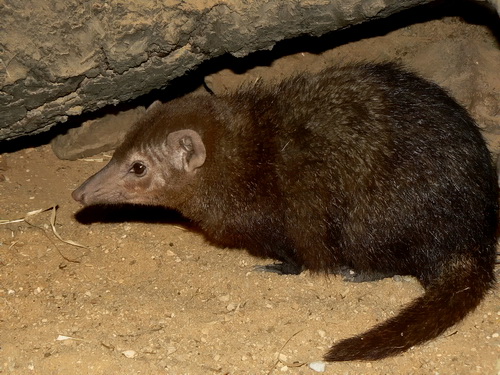

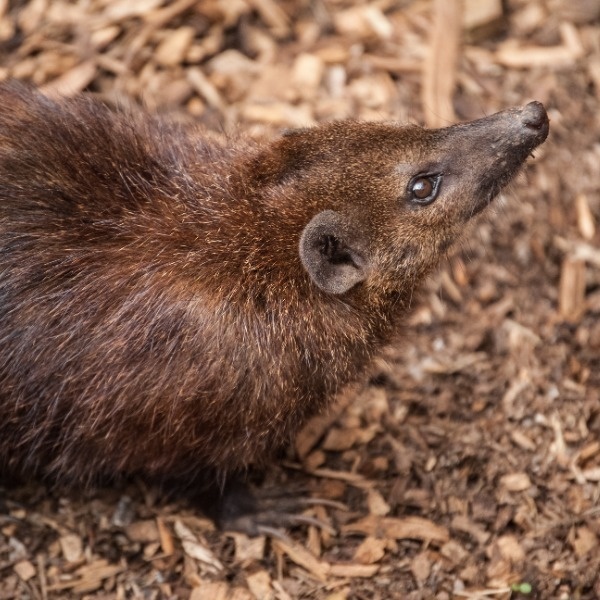
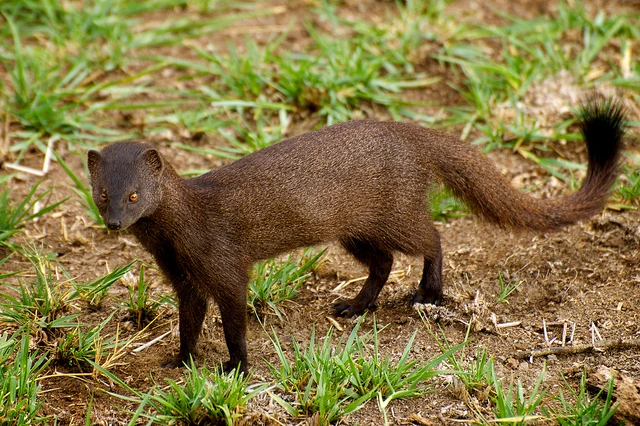
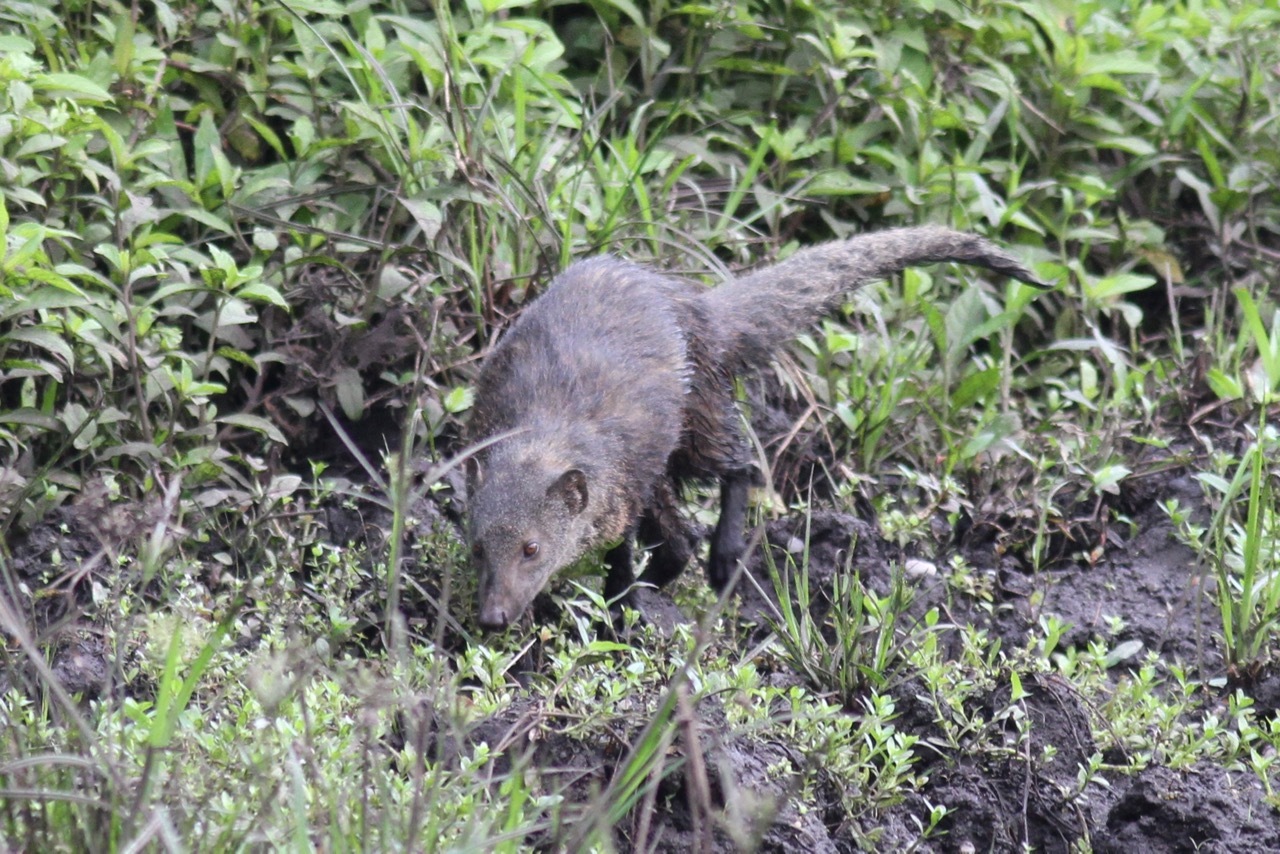
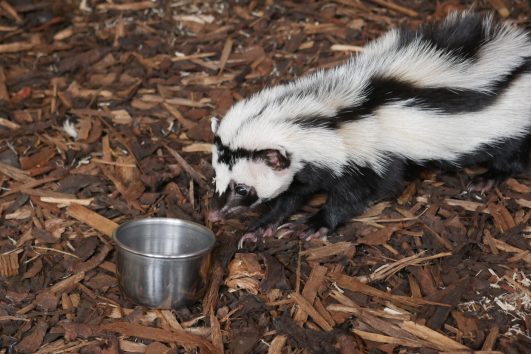
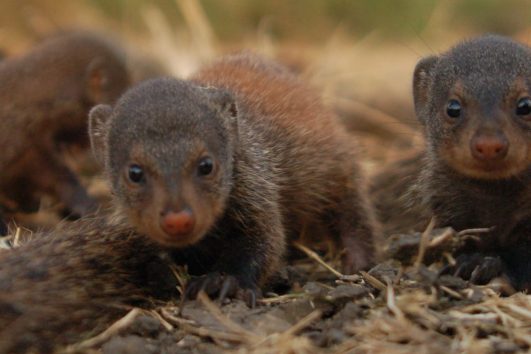

Tour Reviews
There are no reviews yet.
Leave a Review